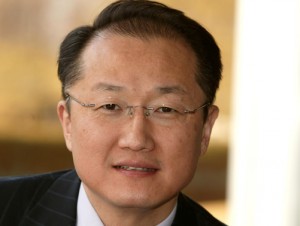World Bank announces strategy to end global poverty by 2030

The World Bank has announced strategies aimed at ending extreme global poverty.
The Bank’s president, Jim Yong Kim outlined the strategy to end extreme poverty by 2030 today April 8, 2015.
According to a press release from the Bank copied to ghanabusinessnews.com, Dr. Kim was speaking at the Center for Strategic and International Studies (CSIS) in Washington in advance of the World Bank/IMF Spring Meetings.
To achieve the Bank’s twin goals – ending extreme poverty by 2030 and boosting shared prosperity among the poorest 40 percent in low- and middle-income countries – “there is more than enough work to go around,” the release cited him as saying.
Dr. Kim also welcomed new development banks such as the Asian Infrastructure Investment Bank and the New Development Bank, established by the BRICS countries, describing them as potentially strong allies in the economic development of poor countries and emerging markets.
He was of the view that the new multilateral banks could help bridge financing gaps in areas such as infrastructure, energy, and water.
“We estimate that the world needs an additional $1 to 1.5 trillion dollars every year to be invested in infrastructure – roads, bridges, railways, airports, and energy plants. By 2030, we will most likely also need 40 percent more energy and face a 40 percent shortfall of water – pressures that may well be further accelerated by climate change,” he said.
He hailed the substantial development progress over the past 25 years, saying, “In 1990, when the world population was 5.2 billion, 36 percent of the world lived in extreme poverty. Today – with 7.3 billion people — an estimated 12 percent live in poverty. Over the past 25 years, the world has gone from nearly two billion people living in extreme poverty to fewer than one billion.”
He was however, quick to point out that there are still nearly a billion people living on less than $1.25 a day.
The release indicated that he outlined a strategy to end extreme poverty, based on the best global knowledge now available, that he summed up in three words: Grow, Invest, and Insure.
– “The world economy needs to grow faster, and grow more sustainably. It needs to grow in a way that makes sure some of our vast wealth goes to the poor.”
– “The second part of the strategy is to invest – and by that, I mean especially to invest in people through education and health.”
– “The final part of the strategy is to insure. This means governments providing social safety nets as well as building systems to protect against disasters and the rapid spread of disease.”
Dr. Kim acknowledged that there was no single blueprint for countries on how they deploy the three-pronged strategy to end extreme poverty, but that it pointed to priorities for the future.
“First, agricultural productivity must increase. Second, we must build infrastructure that provides access to energy, irrigation, and markets. Third, we must promote greater and freer trade. Fourth, we must invest in the health and education of women and children. And fifth, we must implement social safety nets and provide social insurance, including initiatives that protect against the impact of natural disasters and pandemics,” he said.
He also noted that , “In July, world leaders will gather in Addis Ababa to discuss how we will finance our development priorities in the years ahead. In September, world leaders come together at the United Nations to establish the Sustainable Development Goals – a group of targets and goals set for 2030 – just 15 years from now. And in December, leaders of countries again will gather in Paris to work out an agreement based on government commitments to lessen the severe short- and long-term risks of climate change.”
By Emmanuel K. Dogbevi
